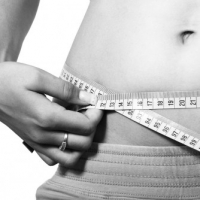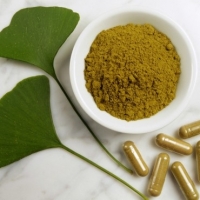‘Traffic Light’ Calorie Labels Help People Make Smarter Menu Choices

Would you still order the turkey club with chips if the menu revealed it was packed with 900 calories? What about if there was a stoplight printed next to it? A new study shows that labels like these help people make better food choices.
The research, published in the Journal of Public Policy & Marketing, analyzed the lunch habits of 450 employees at a health care company. Some people ordered off a menu with calorie counts. Others had a menu with traffic light labels: green lights (indicating meals with 140-400 calories), yellow lights (400-550 calories), and red lights (550-950 calories). A third group saw both numeric counts and traffic lights. And a control group had menus with no calorie labels.
It turned out the numeric counts, traffic lights, and the combo of the two were all equally effective at helping people order smarter. When labels were present, the employees ordered meals with about 10% fewer calories. "These findings suggest that consumers may benefit most from help in identifying relatively healthier choices but rely little on information about the exact caloric content of items," the study authors write.
RELATED: 24 Things You Should Never Order When You Eat Out
The study didn't explore why menu annotations impact us so. But lead author Eric M. VanEpps, PhD, has some theories: “Research shows we’re not very good at knowing the calories in items, and we often underestimate," he explains. "Labels may serve as a reminder to consider your health [when ordering], and they also help you better compare items."
Already chain restaurants with more than 20 locations are required by the FDA to list calorie counts on their menus. If there’s good data to show that these counts influence how people order, it may compel the chains to serve up healthier fare, says VanEpps: "If they [become] uncomfortable with the fact that they have meals with 2,000 calories, they may change what they offer." (In other words, it could mean the end of these nine famously outrageous calorie bombs.)
As for non-chain eateries, whether we see calorie labels pop up on menus is TBD. But in the meantime, you may be able to take matters into your own hands. Some restaurants post nutrition information on their websites. In the past, VanEpps points out, you’d have to ask for that info if you wanted it, and a manager might hand you a paper binder to page through. So helpful.
“As technology continues to advance, we have the ability to access calorie information in easier and quicker ways,” says VanEpps.
-
Lose 20 Lbs In 1 Month - Weight Loss Secrets You Simply Cannot Miss
Click Here Now to Read Your FREE Report & Discover Really Weird Wo
-
Weight Loss - A Complex Issue - Learn More
Please feel free to comment, to provide good informa
-
Change of Clothing Size after Tummy Tuck or Abdominoplasty Surgery
-
Dieting - How You Do It Matters
Most of us know that the 2 most important things when it comes to weig
-
Rob And Kalen Fat Burning Furnace
Rob Poulos, who has fought against his overweight since his childhood.
-
Weight Loss Drug Information
The best place to get the most comprehensive weight los
- DON'T MISS
- Healthy Greater Weight Loss
- What should I do if I want to take dieting pills?
- Lose Belly Fat Easily With The Power Of The Acai Berry!
- Week 1: 10K, Here I Come!
- Healthy Weight Loss Is A Key To Reduce Fat!
- Information About High Calorie Food
- Bicep Workouts Without Weights - 3 Exercises To Tone Your Post Pregnancy Arms
- How Can Honey Help With Weight Loss?
- Healthy Ways to Diet and Lose Weight
- Fat Burning Furnace - Increase Metabolism Naturally to Speed Fat Loss!




